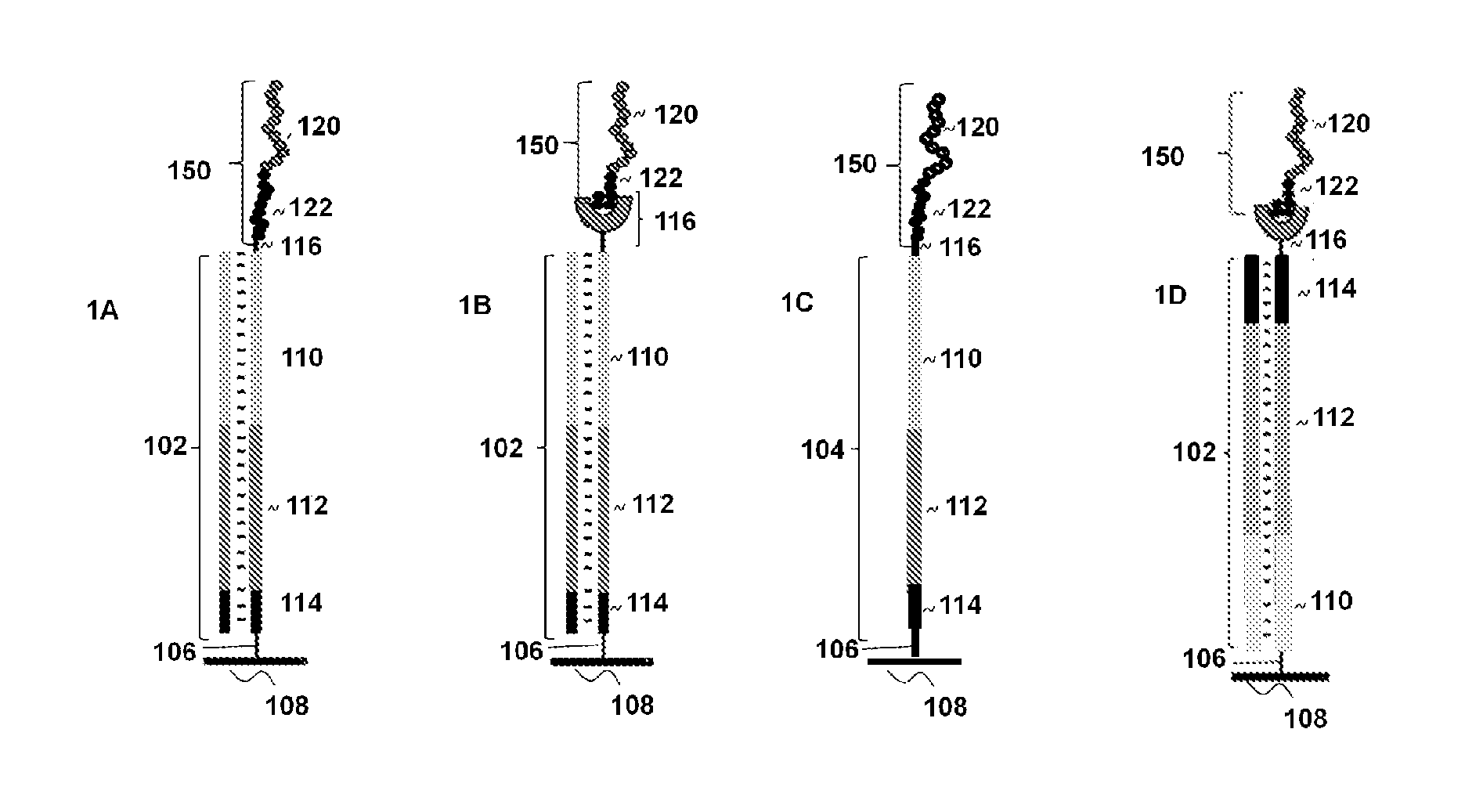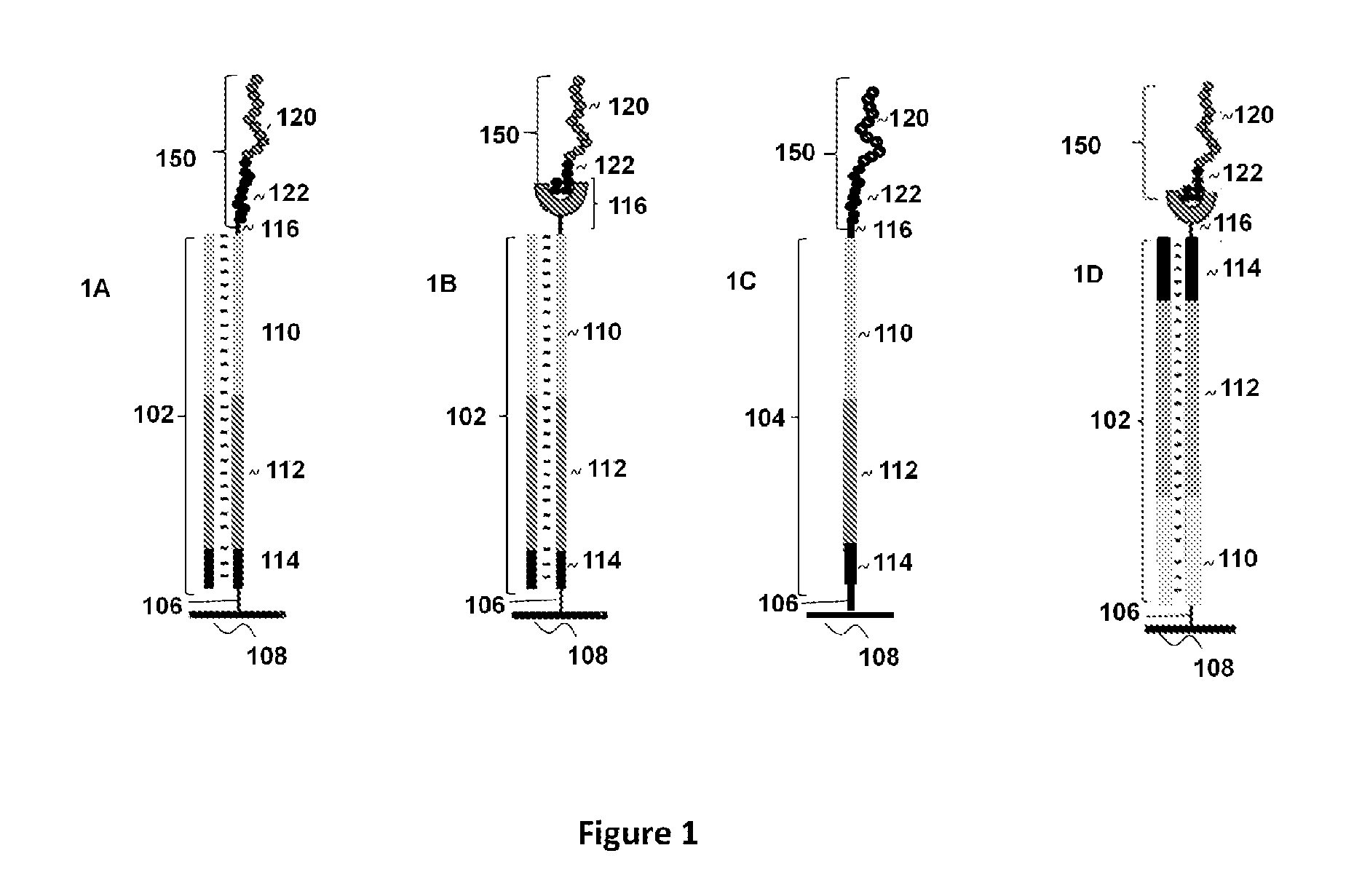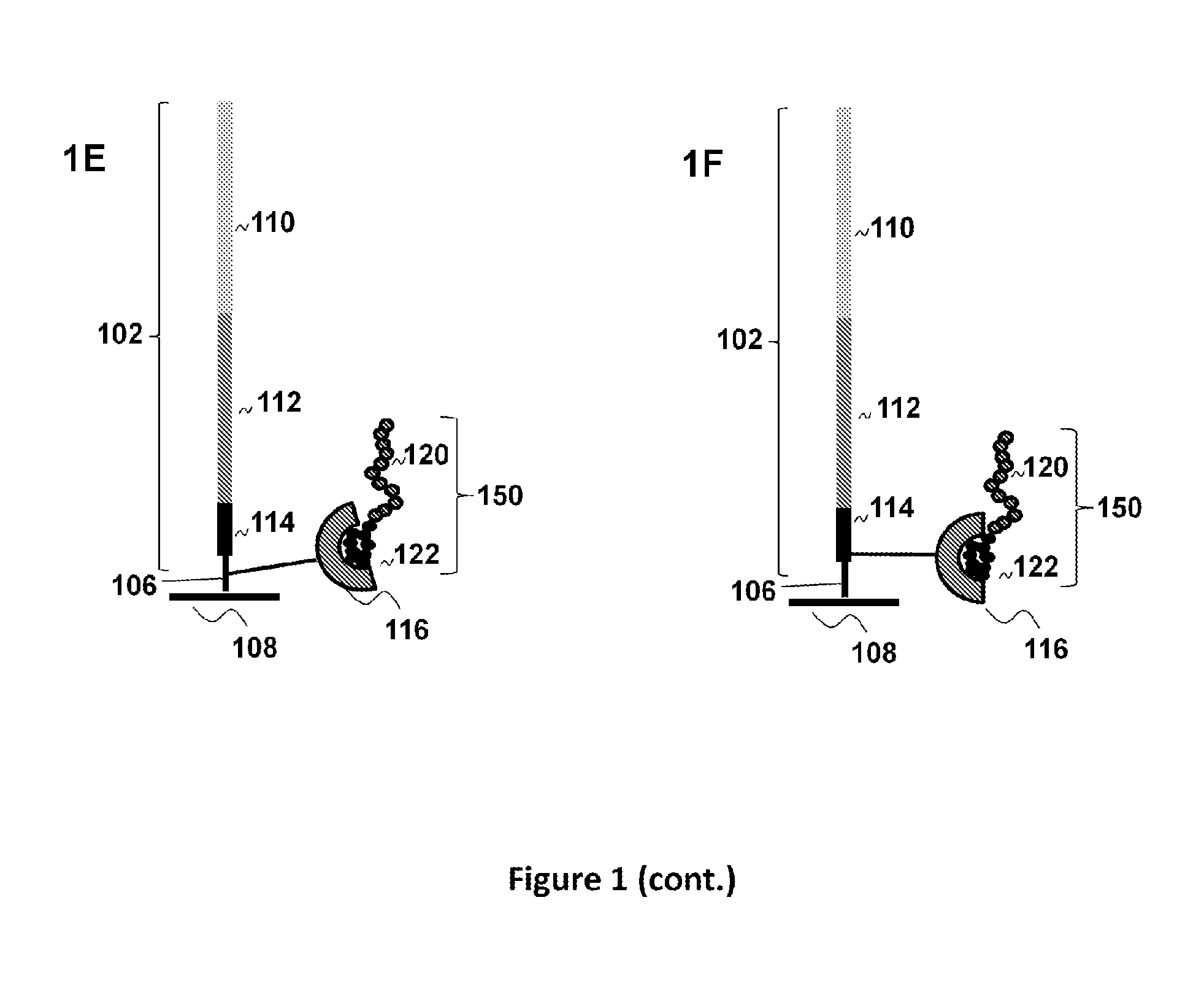Peptide display arrays
a display array and array technology, applied in the field of peptide-based arrays, can solve the problems of high cost of generating arrays with tens to hundreds of thousands of peptides, limited availability of microarray technology for large-scale proteomics studies, and high cost of large-scale, high-throughput use of such arrays, etc., and achieves the effect of high-throughput sequencing and quite inexpensively
- Summary
- Abstract
- Description
- Claims
- Application Information
AI Technical Summary
Benefits of technology
Problems solved by technology
Method used
Image
Examples
example 1
Oligonucleotide Template Design and Synthesis
[0123]Single-stranded oligonucleotides were used for the construction of the arrays. The initial oligonucleotides were 60-mers comprising common regions: a region encoding an affinity tag, either a FLAG peptide (DYKDDDDK) (SEQ ID NO:1) or its shorter version FLAGS (DDDDK) at the 3′-end; a region encoding a peptide of interest, either an HA peptide (YPYDVPDYA) (SEQ ID NO:2) or an AU1 peptide (DTYRYIDYA) (SEQ ID NO:3); and a primer region for the attachment of a universal untranslated region. The primer region was designed to allow for the addition of a long untranslated region comprising a T7 promoter region at the 5′-end followed by a ribosomal binding site (RBS).
[0124]Oligonucleotides were synthesized on an Expedite 8909 DNA synthesizer, using formylindole phosphoramidite (Glen Research, Sterling, Va.) to introduce an aldehyde group at either the 5′- or 3′-terminus of the oligonucleotides. In the case of 3′-end modification, the synthesi...
example 2
Production of Arrays on Beads
[0125]A method was developed for synthesizing arrays of the invention on amino-modified silica beads using established protocols. First, amino groups were incorporated into 3 um silica beads (Bangs Labs) by treatment with 0.5% 3-aminopropylthriethoxysilane solution in ethanol (Aldrich). Next, the beads containing amino groups were treated with 0.1M cyanuric chloride solution (Aldrich) containing 0.2M diisopropylethylamine in acetonitrile followed by treatment with 2% hydrazine (Aldrich) solution in DMF. Washing with ethanol, acetonitrile and DMF was carried out between each step respectively. This process resulted in beads containing hydrazine triazine groups on their surfaces. The oligonucleotides with 3′-aldehyde groups were covalently attached to the beads. The reaction was performed in 100 mM Na-citrate buffer, pH 5.0, containing 1.5M NaCl overnight at room temperature. After overnight incubation, the beads were washed three times with water, two tim...
example 3
Arrays on Glass Slides
[0136]The arrays were constructed using oligonucleotides comprising a primer region for introduction of the capture agent, a region encoding an AU1 (DTYRYIDYA) (SEQ ID NO:5), AU5 (TDFYLKDYA) (SEQ ID NO:6), HA (YPYDVPDYA) (SEQ ID NO:7), or V5 (IPNPLLGLD) (SEQ ID NO:8) 9-mer peptide, and a region encoding a FLAG affinity tag followed by a stop codon. The region also comprised a primer site for hybridization of a primer to be used for primer extension of the single-stranded oligonucleotides.
[0137]Glass slides with covalently linked attached oligonucleotides were created from amino modified slides and oligonucleotides with a 5′-aldehyde group. Glass ES microscope slides containing amino groups (Erie Scientific) were treated with 0.1M cyanuric chloride solution (Aldrich) containing 0.2M diisopropylethylamine in acetonitrile followed by the treatment with 2% hydrazine solution in DMF. Washing with acetonitrile and DMF was carried out between each step. This process r...
PUM
| Property | Measurement | Unit |
|---|---|---|
| distances | aaaaa | aaaaa |
| pH | aaaaa | aaaaa |
| pH | aaaaa | aaaaa |
Abstract
Description
Claims
Application Information
 Login to View More
Login to View More - R&D
- Intellectual Property
- Life Sciences
- Materials
- Tech Scout
- Unparalleled Data Quality
- Higher Quality Content
- 60% Fewer Hallucinations
Browse by: Latest US Patents, China's latest patents, Technical Efficacy Thesaurus, Application Domain, Technology Topic, Popular Technical Reports.
© 2025 PatSnap. All rights reserved.Legal|Privacy policy|Modern Slavery Act Transparency Statement|Sitemap|About US| Contact US: help@patsnap.com



